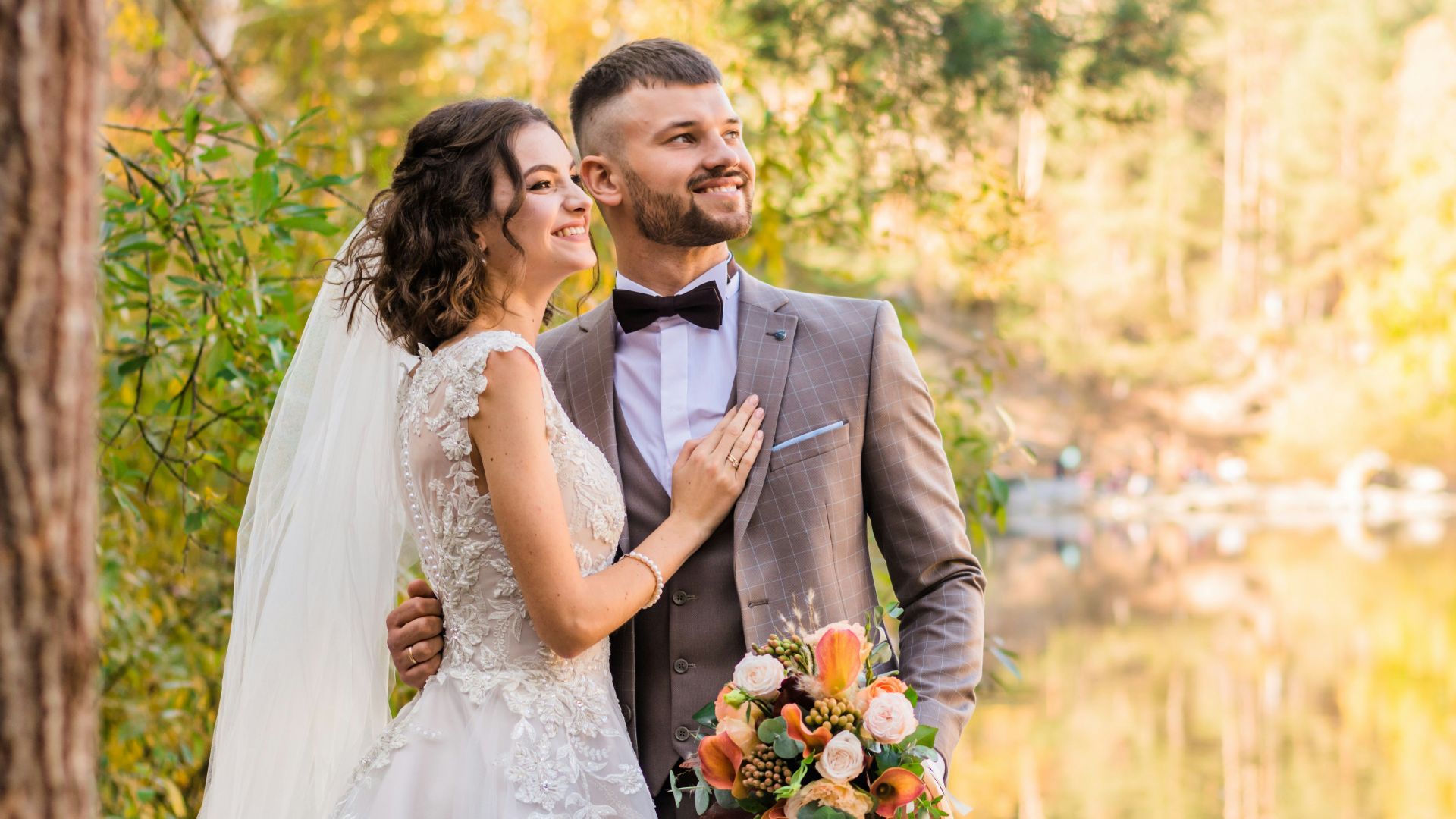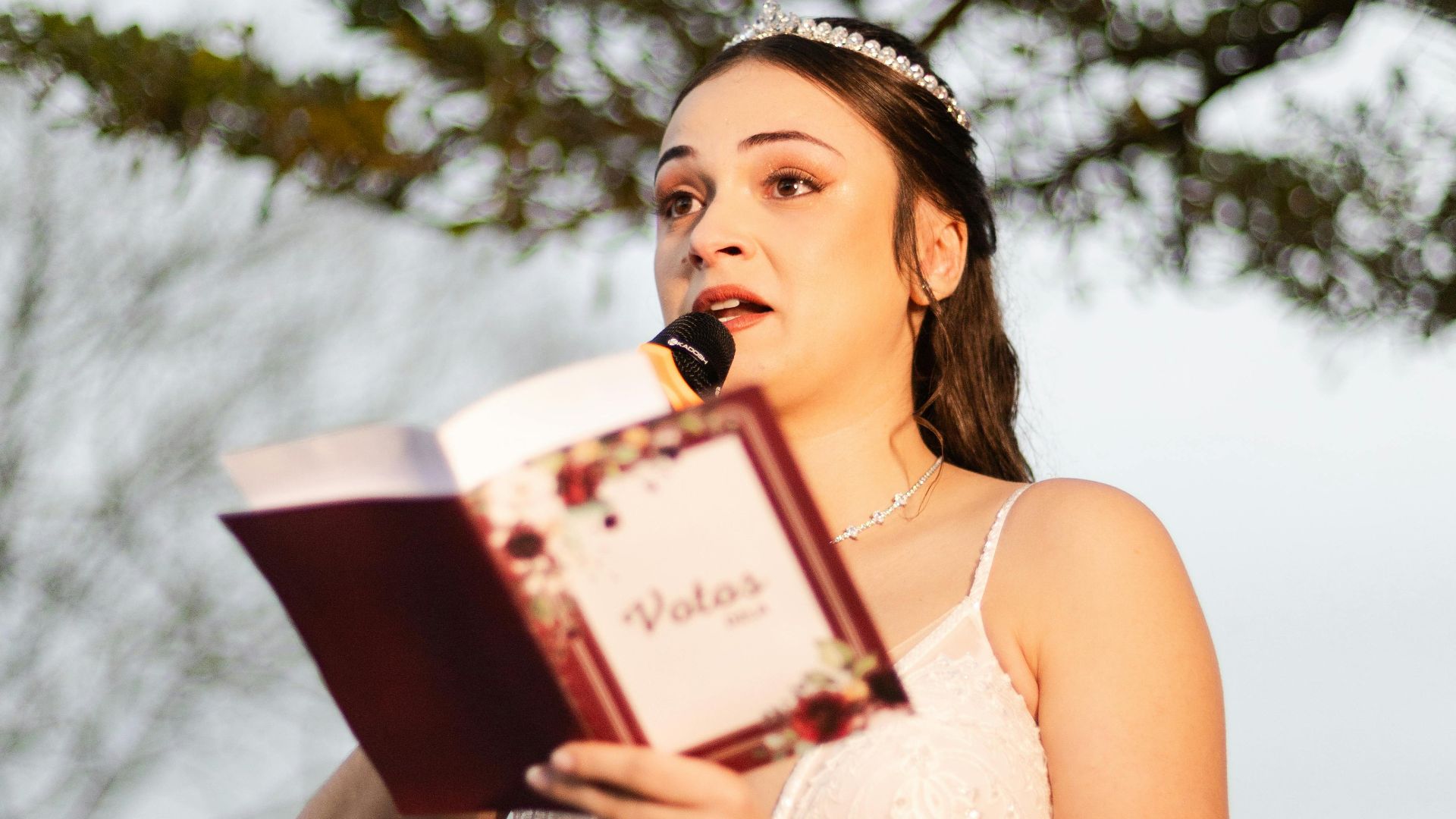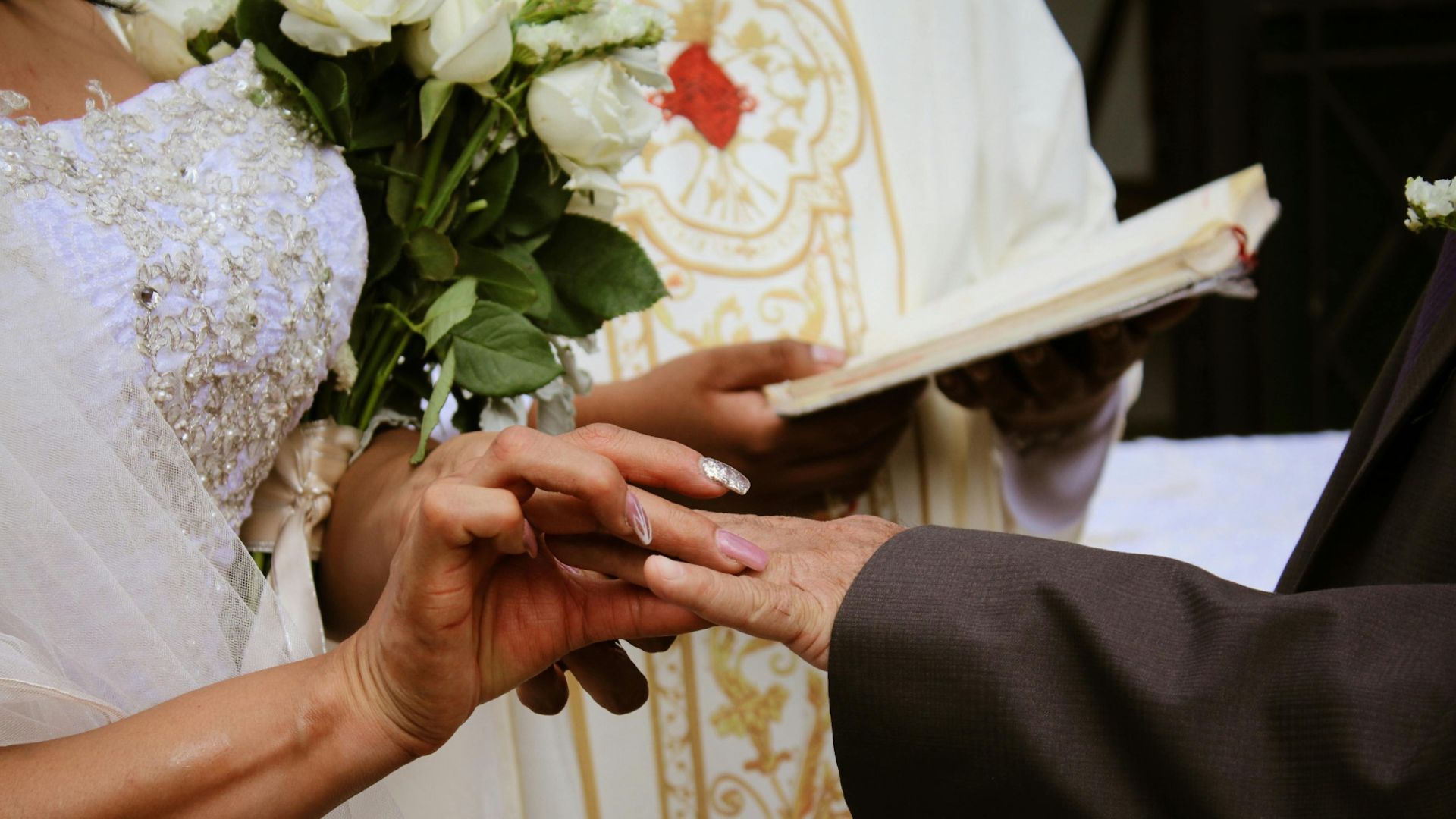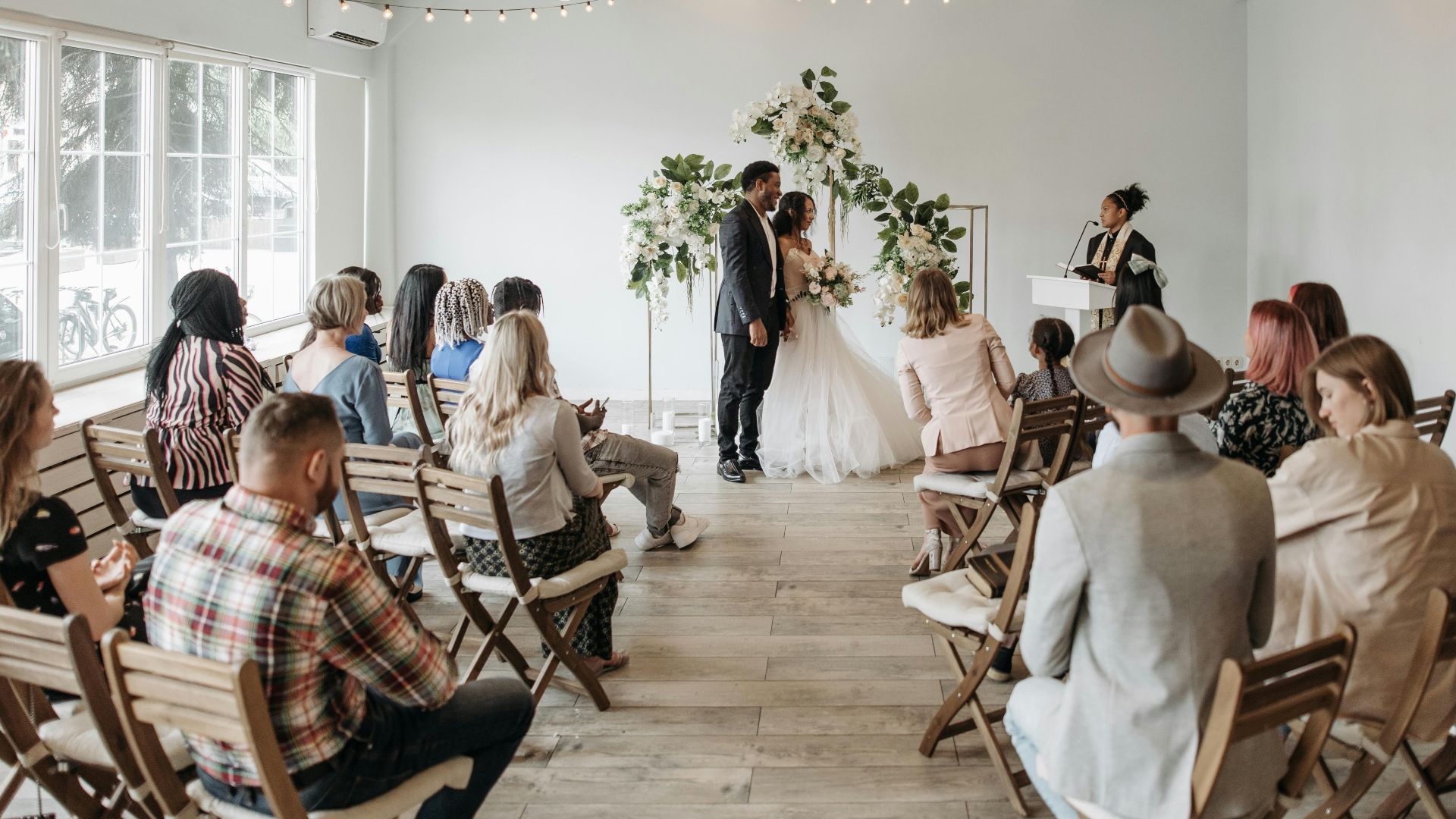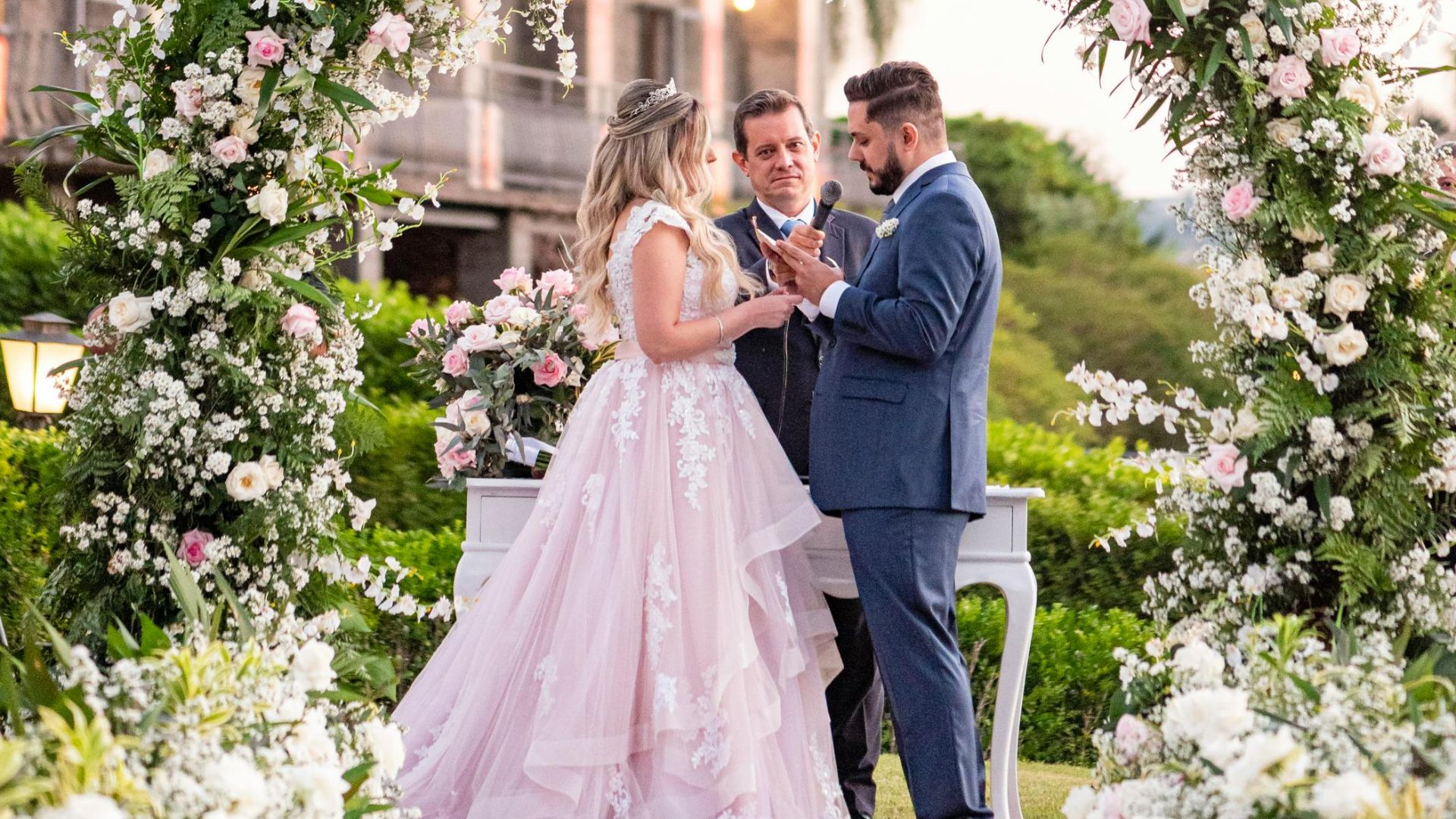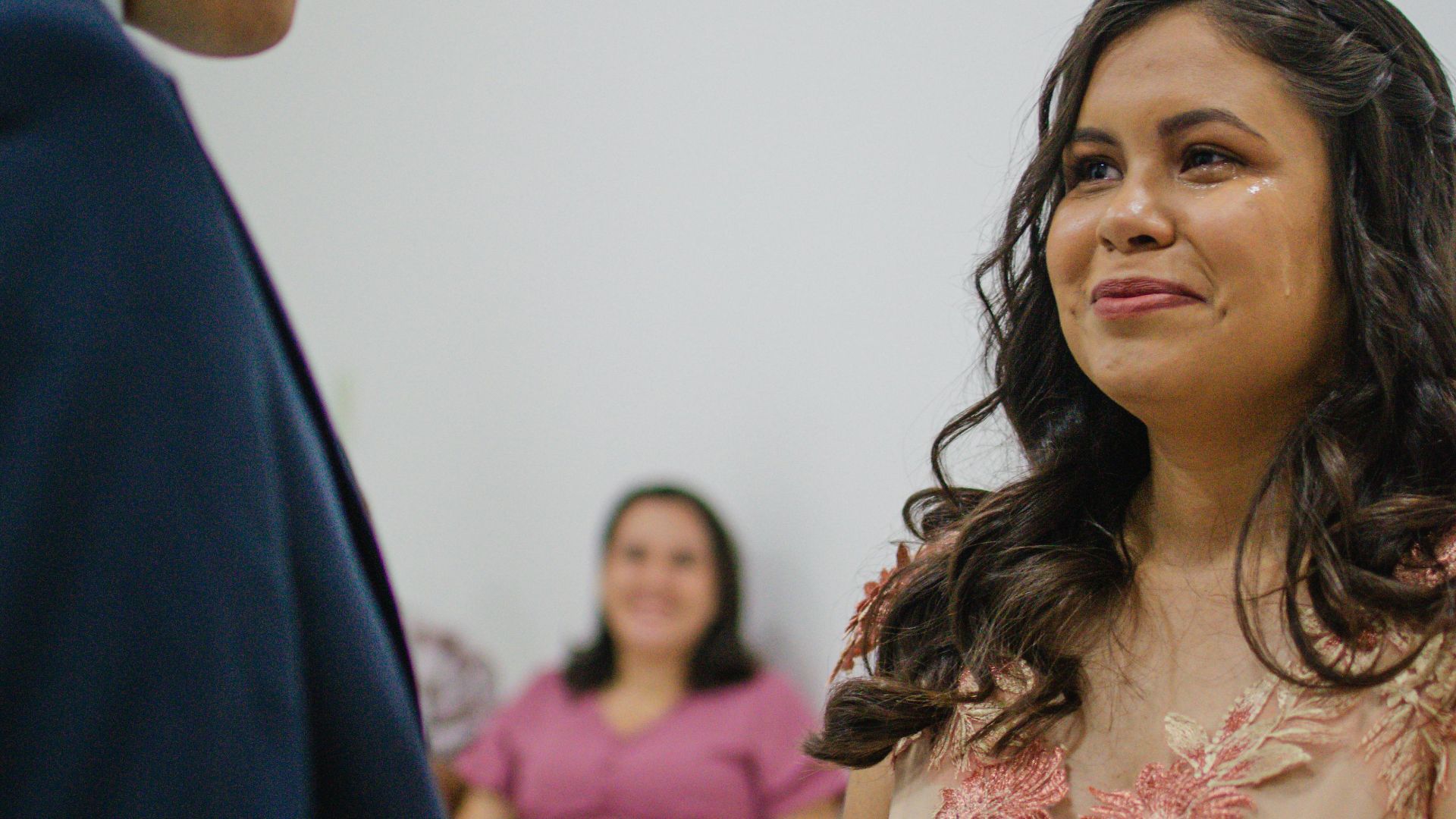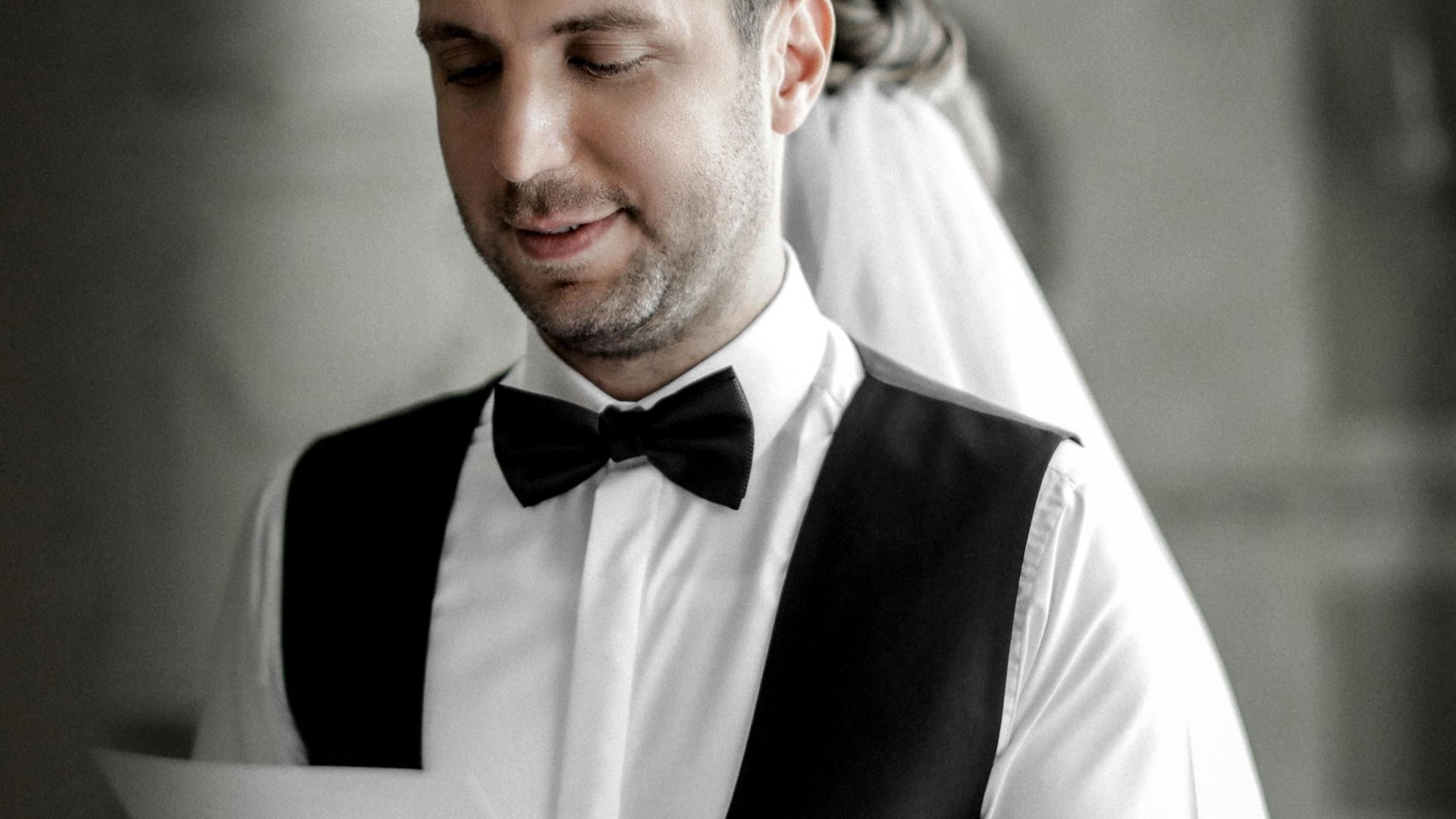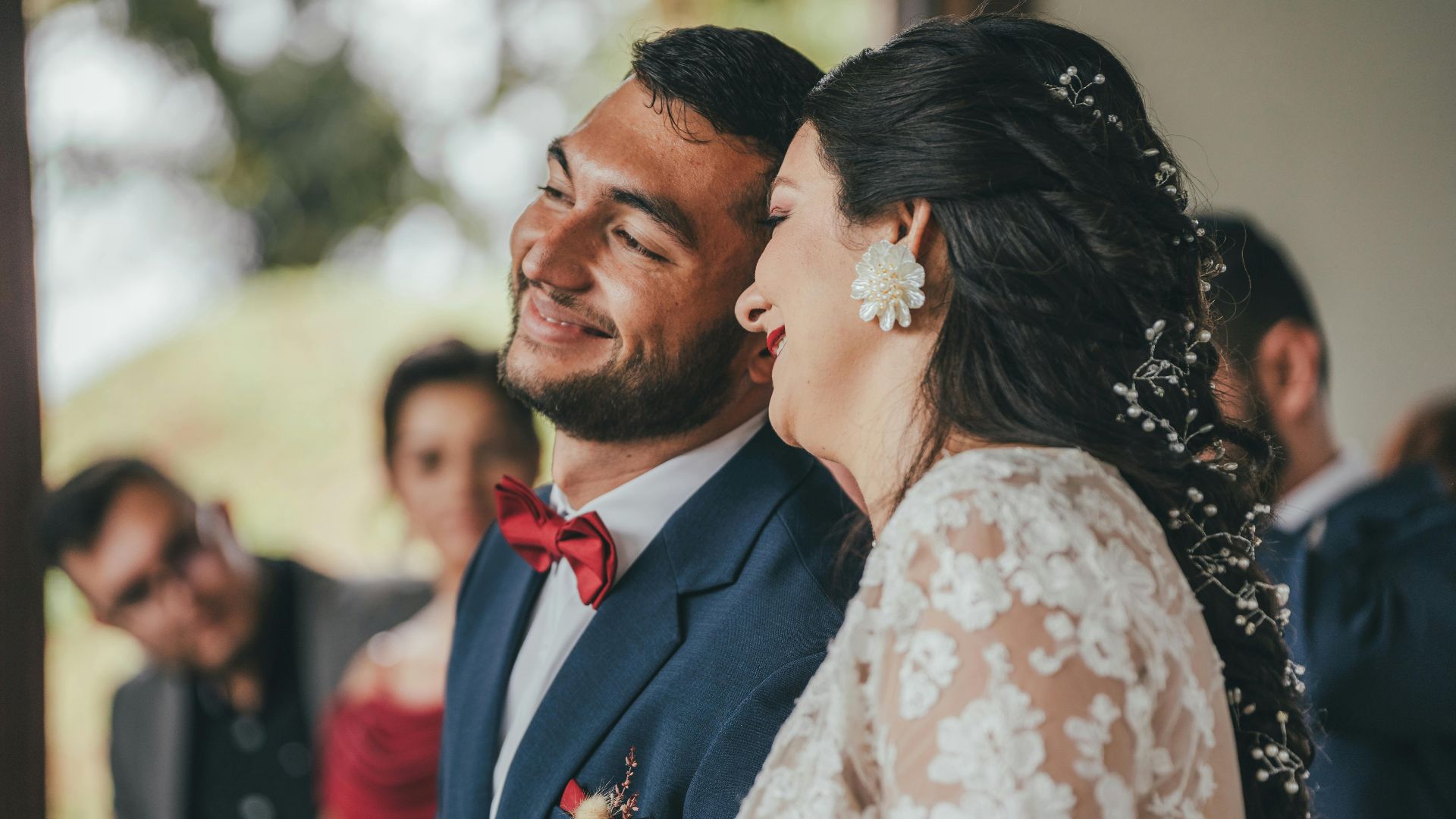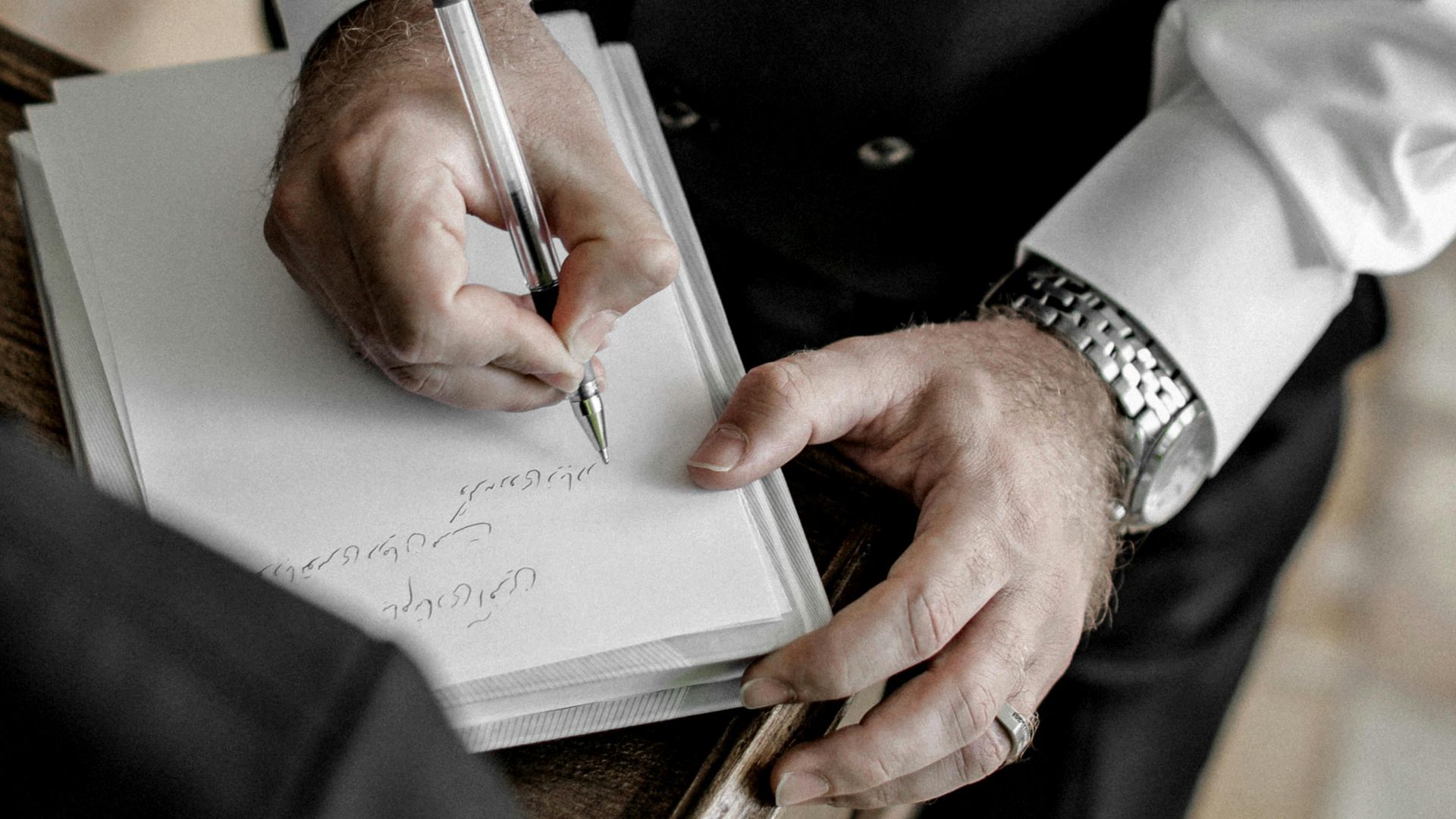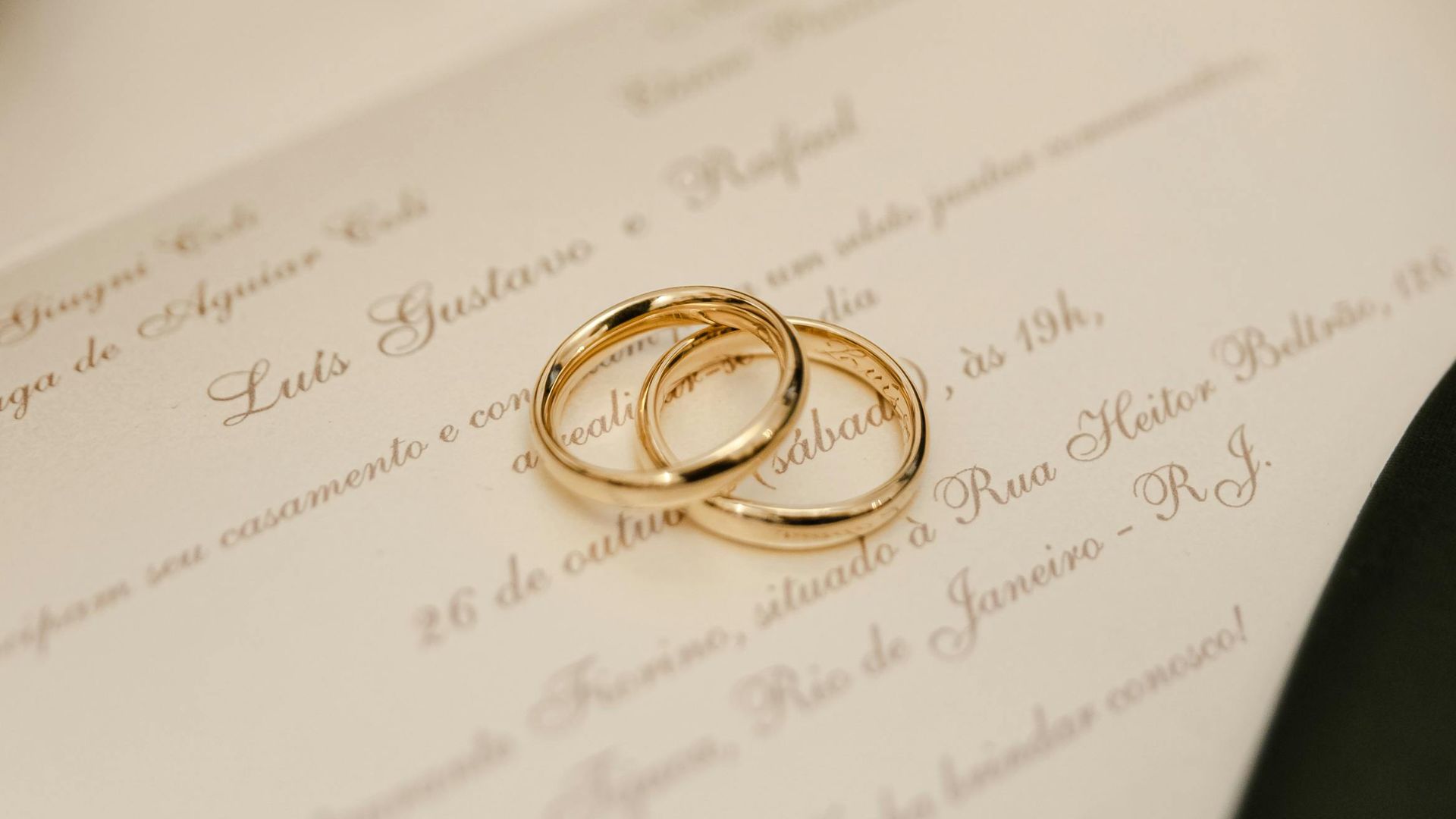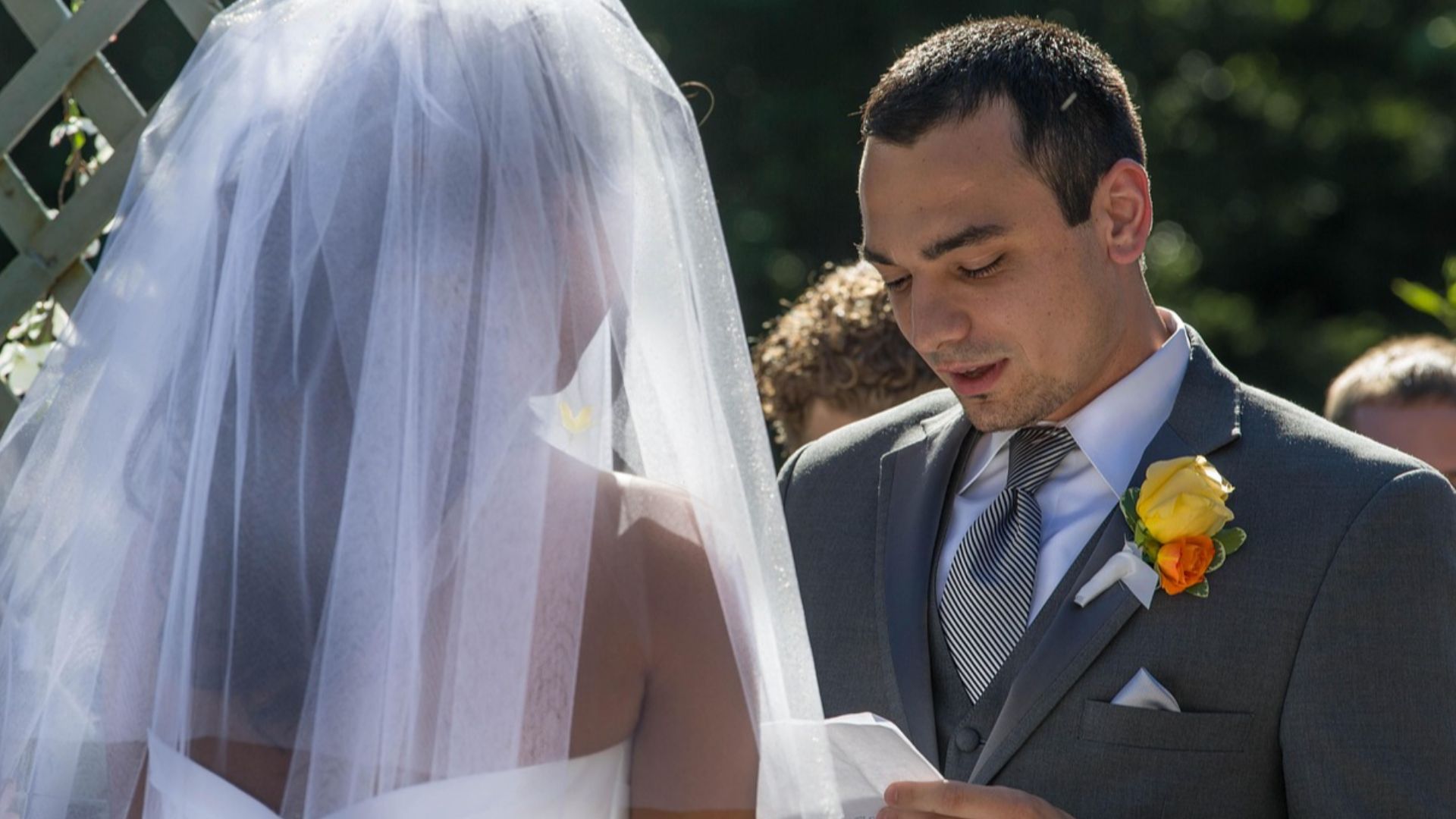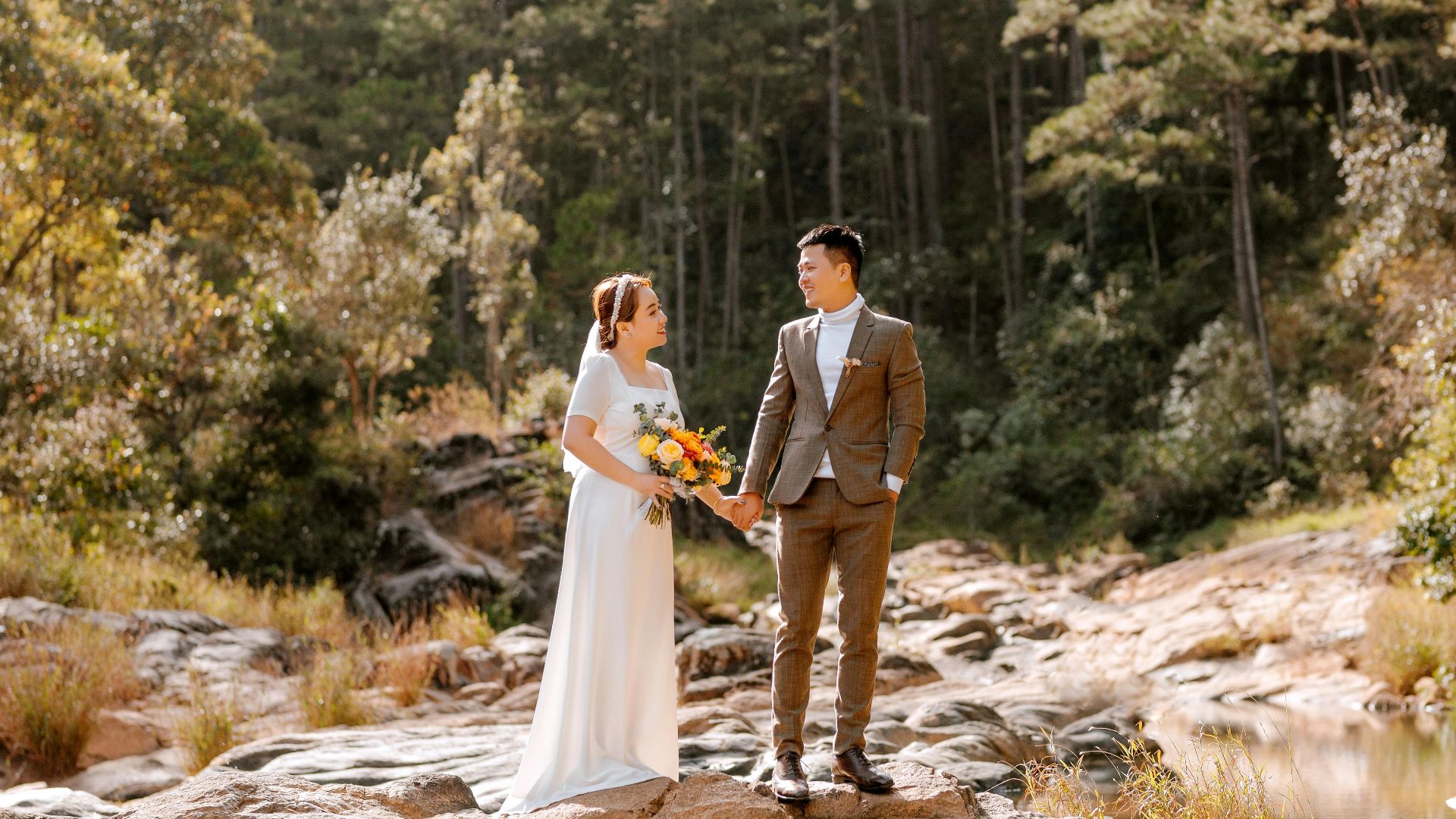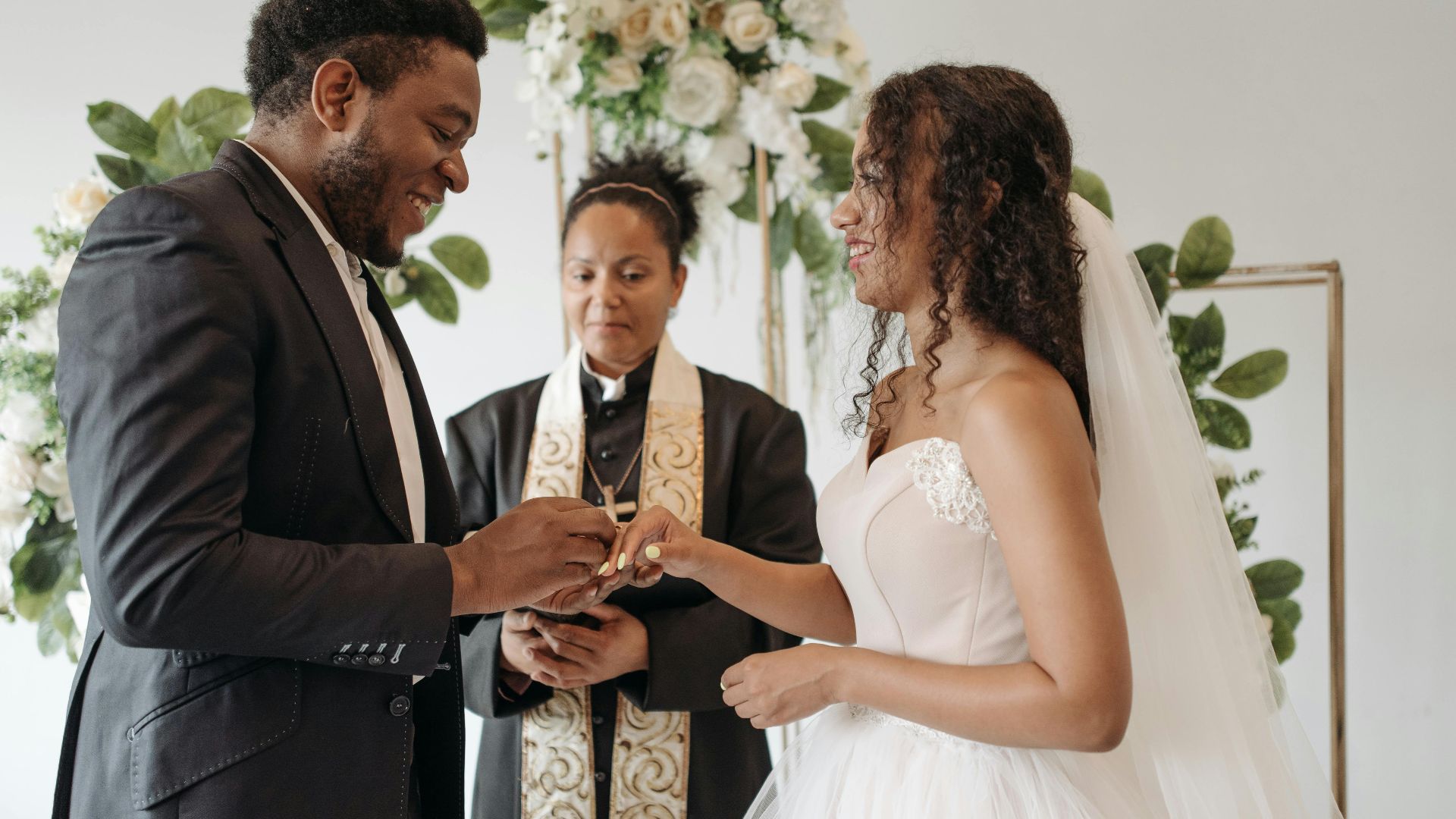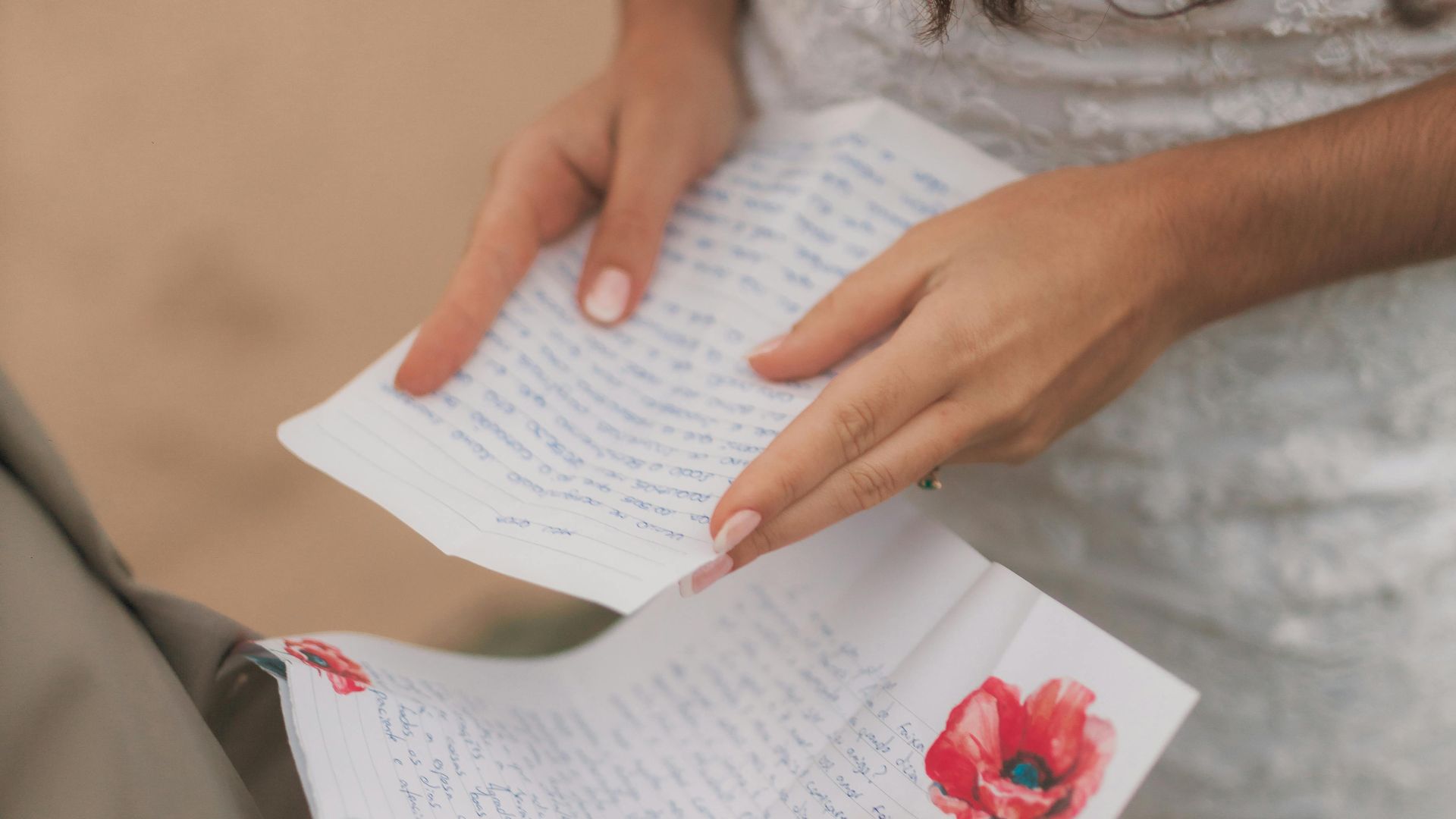Say It Like You Mean It
Every eye will be on you, but it’s your words that everyone will remember. The right vow can spark laughter, tears, love, or that perfect moment of silence when hearts sync. Vows do come with pressure, but are also a rare chance to say something that lasts far beyond the big day. If you're looking to speak with intention and heart, this list offers 20 insights on how you can craft something truly personal—and impossible to forget.
1. Find The Sweet Spot In Length
Vows that land between 500–750 words typically run 3–5 minutes. That’s just enough time to feel meaningful without dragging the moment. WeddingWire forum users widely agree—three minutes hit the emotional mark while keeping everyone tuned in.
2. Add A Personal Touch
Personalized vows create impact—77% of couples said writing their own made the experience “very or extremely meaningful,” according to ‘The Knot’. Many even consult vow-writing pros and value expert guidance to reflect their relationship’s uniqueness.
3. Understand Legal Vs. Symbolic Vows
In the U.S., your vows don’t seal the marriage legally—the license does. That frees you to make them meaningful rather than procedural. While traditions like the 1549 Book of Common Prayer shaped early vows, many modern or Eastern ceremonies skip spoken promises entirely.
4. Use Tradition As A Launchpad—Or Let It Go
Traditions can add emotional weight to your vows—but they’re not a requirement. Over 50% of American brides still embrace classics like “something old,” while others ditch tradition entirely for a more modern feel. If it doesn’t speak to you, skip it. Meaning matters more than formality.
5. Use History To Add Depth
Explore where vows come from to give your own more meaning. The earliest versions focused on property and obedience, not love. Referencing centuries-old phrases like “until death do us part” can ground your words in legacy—just be sure they still reflect who you are today.
6. Try Call-And-Response Formats
If memorizing long vows feels daunting, consider a call-and-response format. Common in Protestant and Presbyterian ceremonies, it leads you through key moments like intent declarations and the ring exchange. This style keeps things simple and meaningful.
7. Add Humor Or A Twist
Some couples swap vows they wrote for each other and read them blind at the altar—a move People.com called “hilarious and heartfelt.” Professionals say it boosts authenticity. And yes, a creative setup like this keeps your ceremony genuine and unforgettable.
8. Weave In Cultural Rituals That Speak To You
Handfasting or Quaker silence—if something reflects your values, include it. These rituals aren't just symbolic; they anchor your vows in shared heritage. You don’t have to follow one tradition strictly—mixing meaningful elements can help you craft vows that feel truly yours.
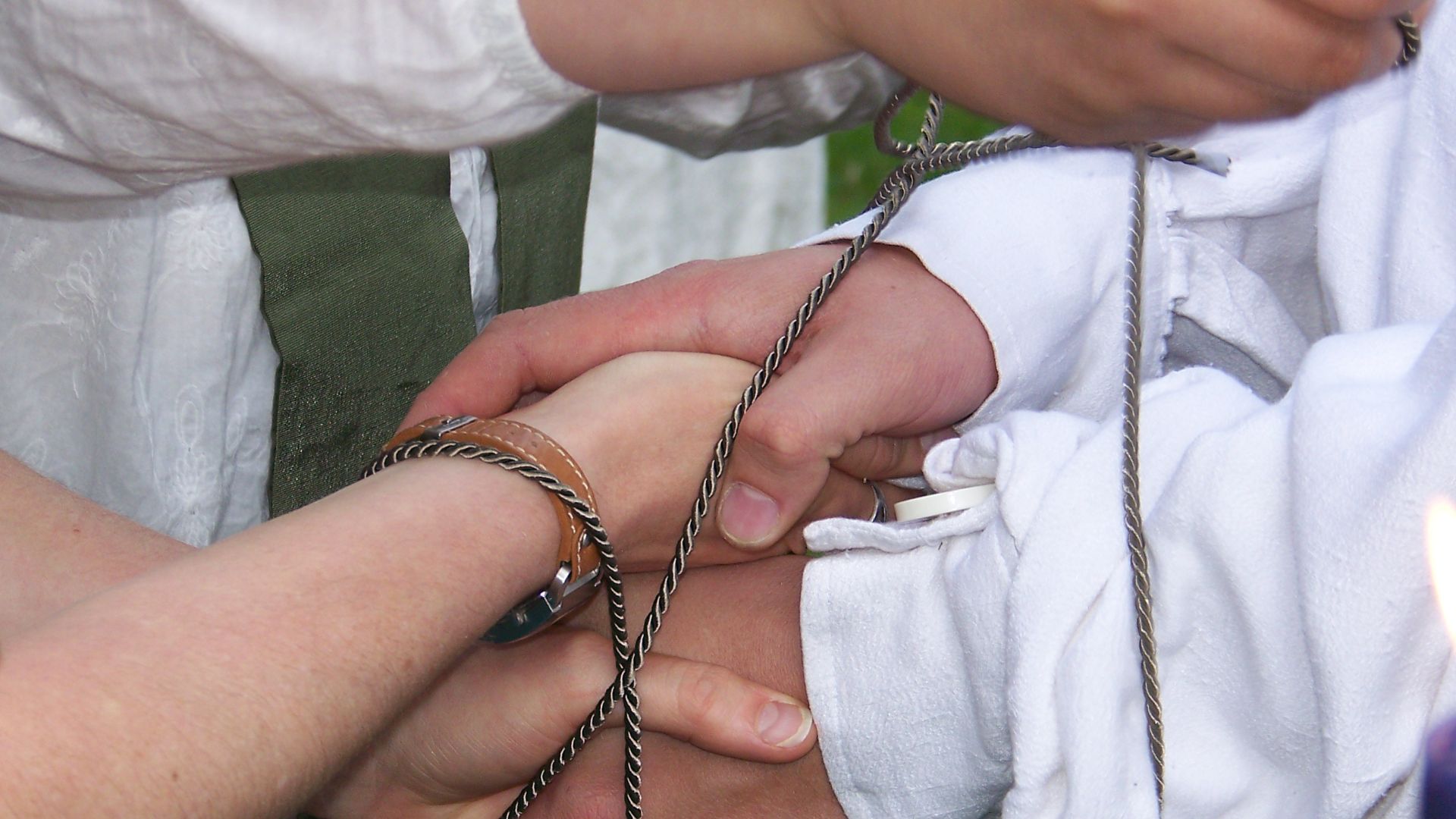 Kam Abbott of Nanaimo, Canada on Wikimedia
Kam Abbott of Nanaimo, Canada on Wikimedia
9. Use Vows As Your Core Moment
You don’t need a massive budget to create impact. Vows are often what guests remember most, especially that first public “I love you.” Even in $36,000 ceremonies, this is the moment that sticks—so invest time in making your words count.
10. Rehearse For Calm, Not Perfection
Writing heartfelt vows is one thing—delivering them takes practice. Keep them under three minutes, and read aloud to someone you trust. A small note card helps if nerves hit. Being prepared lets you stay present and speak with confidence.
11. Tell A Story That’s Yours
By 2023, 65% of U.S. couples added personal anecdotes to their vows—up from 49% in 2019, according to The Knot. Bridesmaid for Hire reports that 62% rely on story-based writing to bring meaning and humor. Keep it real—your best inside joke often says more than poetic lines.
12. Decide: DIY Or Pro Help
Most couples now write their own vows. But if writing isn’t your thing, vow coaches can help for $20 to $199, depending on the service. Choose what gives you the most confidence—whether it’s going solo or getting support to shape your voice.
13. Break Away From The Script
Half of U.S. couples ditched traditional vows in 2021, per The Knot. This shift, rooted in the 1970s, shows you're not alone if old-school phrasing feels off. Start with a basic structure or classic inspiration, then rewrite it until it sounds like you.
14. Keep It Tight, Not Rushed
Modern couples favor brevity—vows now average 60–90 seconds. That’s enough to say something meaningful without drifting. Even with a time cap, it’s your pacing that makes the difference. Short, well-delivered lines often land better than long ones you speed through.
15. Reflect Shared Values
More couples are now weaving values like inclusivity into their vows. Bridesmaid for Hire reports a growing trend of eco-promises and gender-neutral language. These choices help your vows stand for more than romance—they show who you are as partners in life.
16. Consider A Private Exchange
More couples are skipping the crowd and exchanging vows in private, before or after the ceremony. This approach opens the door for real emotion and moments that feel truly personal. It's the perfect setting for inside jokes or words too sacred to share aloud.
17. Get Creative With Tech, If It Fits
Couples are now exploring vow enhancements with AR visuals or synchronized wearables. These multimedia additions create immersive, emotionally rich moments. Done right, they enhance storytelling without overshadowing the message.
18. Use AI As A Starting Point
Many couples have started using AI, like ChatGPT, to brainstorm vows. Over half used it just for ideas. If you're stuck, AI can break the block—but refining it into your preference and tone is what makes it personal.
19. Use Your Daily Life As Material
Think small: the morning coffee hand-off, your partner’s laugh during reruns, shared playlists on long drives. These little rituals reveal the real love story. Vows rooted in daily life hit deeper than poetic declarations—they show what forever actually looks like.
20. Include a Vow Revisit Plan
Promise to revisit your vows—on your 1st or 10th anniversary. This future-facing detail gives your words a life beyond the ceremony. It turns your vows into a living promise, one you’ll reflect on, re-read, and perhaps even rewrite together as you grow.


